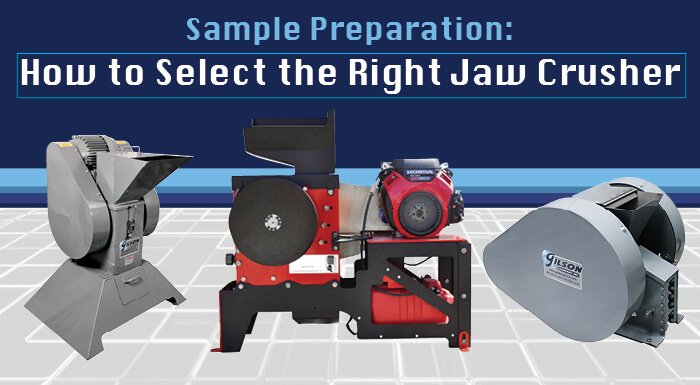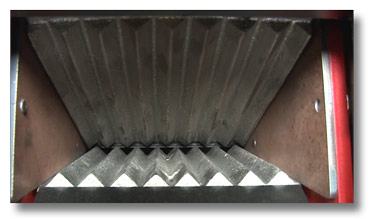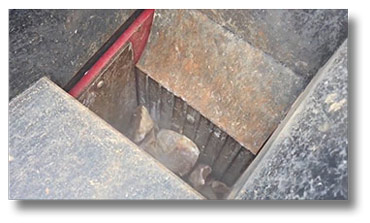
What is a Jaw Crusher Used for?
When testing aggregates, ores, coal, or coke in geotechnical or construction materials testing laboratories, sample preparation often involves the reduction of particle sizes from the initial bulk or field sample. Many of these materials are hard, tough, or brittle, so crushing them into smaller sizes is an ideal application for robust, rugged, and durable jaw crushers.
The Working Principles Of Jaw Crushers
All jaw crushers operate on the same straightforward principle; two hard-faced heavy plates or jaws crush large particles between them. One powered jaw reciprocates in an elliptical motion opposite a stationary jaw mounted in the frame.

During an operating cycle, the gap between the two jaws opens; a particle drops in, and the jaws close in and crush the particle. Further crushing of the fractured pieces continues until particles are small enough to fall through the bottom opening by gravity. The jaws face each other at a slight vertical angle, so particles become smaller as they progress toward the bottom.

A simple adjustment of the distance between the two jaws regulates the final sample size. The term, "final size" can be a little vague. It refers to the approximate maximum particle size at completion of crushing, but the size range and distribution can vary considerably based on the material properties of the sample.
Advantages of a Jaw Crusher
Many factors make laboratory jaw crushers the optimum selection for effective and efficient primary crushing of hard, brittle, rock-like materials.
- Laboratory models are available with sample top sizes from 1in to 8in (25mm to 203mm).
- Jaw plates are available in a variety of material types to optimize performance with different materials.
- Models have throughput capacities from 50lb to 4,000lb (22kg to 1,800kg) per hour for volumes from small samples to pilot-plant scale production.
- A broad range between maximum size (top size) capacity and final particle size of the processed sample means fewer steps for complete reduction.
- Adjustable spacing between jaws regulates the final sample size and compensates for wear.
- Reversible jaw plates extend service life between replacements.
- The proven technology provides consistent, repeatable results.
- Jaw crushers feature safe, simple operation and maintenance.
Disadvantages of a Jaw Crusher
Jaw crushers can also have some disadvantages compared to other types of size reduction.
- Opposing jaw plates are less efficient at reducing materials that are tough, ductile, or soft instead of hard and brittle.
- The fine sizes are generally coarser than those produced with pulverizers, hammer mills, and other types of crushers.
- The final particle size range is not as tightly controlled as other crusher types.
How to Choose:
The selection of the best jaw crusher for your application will naturally be governed by the particle size, volume, and properties of your bulk material, along with the desired particle size and quantity of the final sample. The size of the jaw plates limits the particle size capacity and determines the size of the feed opening. In general, maximum particle sizes are about 70-80% of the feed opening, but this can vary by manufacturer and model. Jaw materials are available in a variety of materials to adapt to the hardness and toughness properties of samples and to extend service life.
Our Recommendations:
Small Crushers: For applications where reduced quantities of materials with smaller top sizes and final sizes are needed, these smaller jaw crushers fit the bill. Their compact size allows easy positioning anywhere in the lab, even on a benchtop.
| Top Size, in (mm) | ¹Final Size, in (mm) | Model # | Product Description | Maximum Throughput/hr, lb (kg) | Available Jaw Materials | Notes |
|---|---|---|---|---|---|---|
| 1 (25) | 0.0625 (1.6) | LC-8 | Mini Jaw Crusher | 20 (9) | Alloy Steel, Ceramic, or Tungsten Carbide | Ideal for small quantities |
| 2 (50) | 0.055 (1.4) | LC-27 | Laboratory Jaw Crusher | 50 (22) | AR450 Steel | High rpm and lower dust operation |
Medium Crushers: These useful models have the capacity, size, and power to meet most primary crushing functions in the lab. Options for voltage configurations add to their versatility.
| Top Size, in (mm) | ¹Final Size, in (mm) | Model # | Product Description | Maximum Throughput/hr, lb (kg) | Available Jaw Materials | Notes |
|---|---|---|---|---|---|---|
| 2.4 (60) | 0.04 (1.0) | FT-101 or FT-103 | Fritsch Jaw Crusher | 390 (140) | Hardened or Stainless-Steel, Chromium-Free, Manganese, Tungsten Carbide, or Zirconium Oxide options | Available in single-phase or three-phase electrical options |
| 3 (76) | 0.063 (1.6) | LC-33 or LC-34 | Standard Bico Chipmunk Jaw Crusher | 400 (182) | Alloy Steel, Manganese Steel optional | Separate model numbers based on voltage options |
| 3 (76) | 0.24 (6.0) | LC-20 | Morse Jaw Crusher | 1,200 (545) | Alloy Steel, Inquire about others | — |
| 3 (76) | 0.25 (6.3) | LC-28 | Laboratory Jaw Crusher | 500 (227) | High-Manganese Steel | High rpm and lower dust operation |
| 4 (102) | 0.063 (1.6) | LC-35 or LC-36 | Heavy-Duty Bico Chipmunk Jaw Crusher | 800 (363) | Alloy Steel, Manganese Steel optional | Separate model numbers based on voltage options |
| 4 (102) | 0.24 (6.0) | LC-22 | Morse Jaw Crusher | 2,500 (1,134) | Alloy Steel, Inquire about others | — |
Large Crushers: When size, capacity, and throughput are the most sought-after features, these units are the best choice. Some models can be ordered with gasoline or Diesel engines for mobile on-site work at remote locations or pilot plants.
| Top Size, in (mm) | ¹Final Size, in (mm) | Model # | Product Description | Maximum Throughput/hr, lb (kg) | Available Jaw Materials | Notes |
|---|---|---|---|---|---|---|
| 6 (152) | 0.12 (3.0) | LC-37 | Bico Badger Jaw Crusher | 1,300 (590) | Alloy Steel, Manganese Steel optional | — |
| 6.5 (165) | 0.25 (6.4) | LC-24 | Morse Jaw Crusher | 4,000 (1,800) | Alloy Steel, Ceramic, or Tungsten Carbide | — |
| 8 (203) | 0.24 (6.0) | LC-44 | 10in Jaw Crusher | 4,000 (1,800) | 450 Brinell Steel, Manganese/Chrome optional | Electric, Diesel, or Gas-Powered options |
We hope this blog post has helped you select the right jaw crusher.
Gilson Is Here to Help
Contact our testing experts for more information or to discuss your testing application.
Testing Resources
Standard Test Methods, Specifications, and Practices
Individual test methods and specifications referenced in our product descriptions, blog articles, and videos are available for review or purchase from the professional organizations noted.
- ASTM International (American Society for Testing and Materials)
- AASHTO (American Association of State Highway and Transportation Officials)
- ACI (American Concrete Institute)
- State DOTs (Departments of Transportation)
- ISO (International Organization for Standardization)
- BS (British Standards)
- EN (European Standards)

















